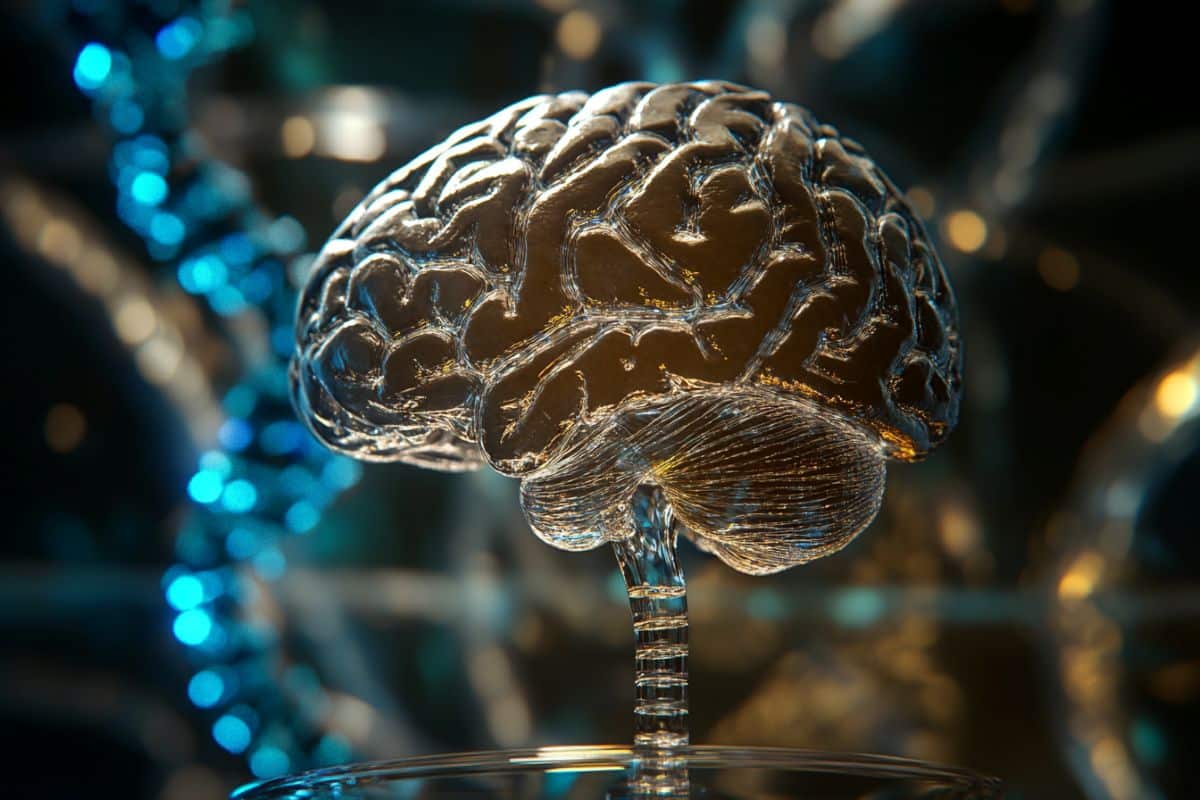
Overview: A groundbreaking study suggests that human accelerated regions (HARs)—specific DNA segments that have evolved at an unprecedented rate—are crucial for the advanced cognitive functions of the human brain. Researchers conducted a comparative analysis of neurons from humans and chimpanzees, uncovering that HARs promote the development of various neural projections, which significantly improve communication between brain cells.
When HARs from humans were integrated into chimpanzee neurons, the latter exhibited increased growth of projections, indicating a strong relationship between HARs and neural intricacy. However, these same genetic alterations could also be implicated in neurodevelopmental disorders such as autism, underscoring the complex nature of human brain evolution.
Key Insights
- Rapidly Evolving DNA: HARs evolved tenfold faster than anticipated, significantly influencing neural development.
- Improved Neural Connectivity: HARs facilitate the growth of multiple neurites in human neurons, enhancing communication between brain cells.
- Potential for Neurodevelopmental Disorders: While HARs contribute to cognitive sophistication, their alteration may lead to conditions like autism.
Source: UCSF
What factors enabled humans to develop brains capable of complex language and civilization?
The answer appears to be found in unique DNA characteristics. Researchers at UC San Francisco identified that certain chromosome segments have evolved at remarkable speeds, giving humans an advantage in brain development over primates. However, these changes also pose risks for uniquely human neurological disorders.

This comprehensive study, which received support from the National Institutes of Health, is published in Nature as of February 26.
The research primarily focused on human accelerated regions (HARs), segments of DNA that have evolved more rapidly since humans diverged from chimpanzees—at a pace ten times faster than was previously expected in mammalian evolution.
Led by Dr. Yin Shen, a professor at the UCSF Weill Institute for Neurosciences and the UCSF Institute for Human Genetics, the study probed the impacts of HARs in artificially cultured neurons derived from both human and chimp cell lines.
Despite the 99% genomic similarity between humans and chimpanzees, HARs account for a significant portion of the genetic variations that can lead to distinctive differences in neuronal behavior observed in laboratory environments.
The human neurons developed numerous neurites—slender projections essential for transmitting and receiving neuronal signals—while chimpanzee neurons formed only singular neurites. Upon introducing HARs from humans into chimp neurons, the latter displayed increased growth of these projections.
“An increase in neurites during development can lead to greater complexity in our neural structures,” noted Dr. Shen.
“These intricate networks play a vital role in signal transmission within the nervous system and underlie our advanced cognitive operations. Nevertheless, any disruption in this development could potentially result in neurodevelopmental issues such as autism.”
Authors: Additional contributors from UCSF include Xiekui Cui, PhD, Han Yang, PhD, Charles Cai, Cooper Beaman, Xiaoyu Yang, PhD, Hongjiang Liu, Xingjie Ren, PhD, Zachary Amador, Ian R. Jones, Kathleen C. Keough, PhD, Meng Zhang, PhD, MS, Tyler Fair, PhD, Zhen Ye, Alex A. Pollen, PhD, and Katherine S. Pollard, PhD. Comprehensive author details can be found in the published paper.
Funding: This research was funded by various grants from the US National Institutes of Health (NIH) including U01DA052713, UM1HG009402, R21DA056293, R21HG010065, R01MH109907, U01MH116438, DP2MH122400-01, P30DK063720, and S101S10OD021822-01, along with support from the Schmidt Futures Foundation, the Chan Zuckerberg Biohub, and the Gladstone Institutes. Full funding information is available in the publication.
About This Research on Genetics and Cognition
Author: Levi Gadye
Source: UCSF
Contact: Levi Gadye – UCSF
Image: Image credits to Neuroscience News
Original Research: Access to full study is limited.
“Comparative characterization of human accelerated regions in neurons” by Yin Shen et al. Nature
Abstract
Comparative Characterization of Human Accelerated Regions in Neurons
Human accelerated regions (HARs) are conserved genomic regions that have undergone rapid nucleotide changes post-divergence from chimpanzees.
HARs are notably enriched in potential regulatory regions adjacent to neurodevelopmental genes, indicating their likely roles in gene regulation. Nevertheless, their target genes and functional implications for human brain development remain largely unexplored.
This study aims to elucidate the cis-regulatory roles of HARs in excitatory neurons induced from human and chimpanzee pluripotent stem cells (iPSCs). Utilizing genomic and chromatin looping data, we prioritized 20 HARs and their chimp orthologues for functional analysis through single-cell CRISPR interference, demonstrating their species-specific gene regulatory activities.
Our findings reveal varied functional outcomes of HAR-mediated cis-regulation within human neurons, including reduced NPAS3 expression by modifying the binding capacities of various transcription factors in HAR202, and maintaining the pluripotency and neuronal differentiation potential of iPSCs via the upregulation of PUM2 by 2xHAR.319.
Finally, we applied prime editing to illustrate the differential enhancer activities attributed to multiple variants of HAR26;2xHAR.178. Notably, we established a connection between one variant in HAR26;2xHAR.178, heightened SOCS2 expression, and increased neurite outgrowth in human neurons.
In summary, our research provides fresh insights into the inherent gene regulatory functionalities of HARs and their potential role in the evolution of the human brain.









